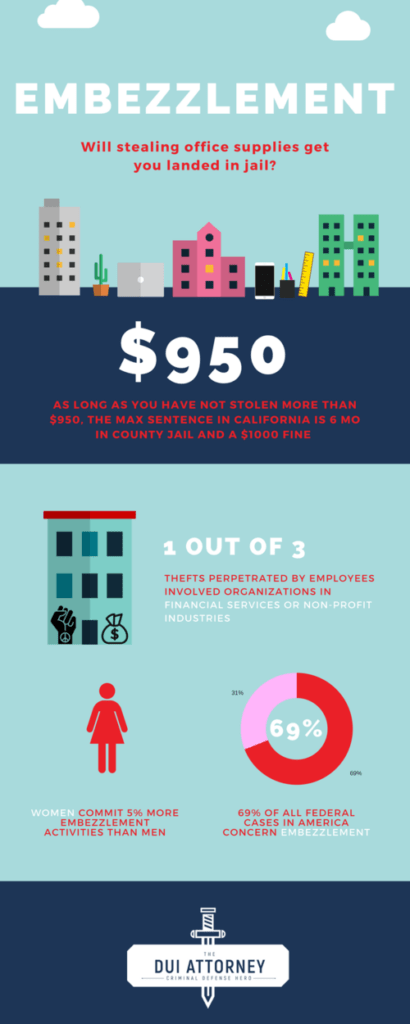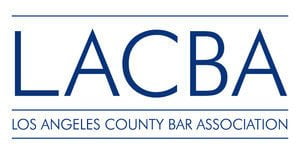Criminal Defense
CRIMINAL DEFENSE
Criminal Defense
Being arrested is one of the most traumatic things that an individual can experience, and the average American male has a 52% chance of being arrested in his lifetime. Being criminal defense attorneys, we understand what you and your loved ones are going through. We understand the intricacies of police and criminal procedure, and we can help preserve your rights. Before you talk to the police, you need to consult a criminal defense attorney. The best time to seek help is before you are arrested. You don’t have to talk to the police, and consulting a criminal attorney early in the process keeps your options open to reach the best outcome in your case.
A qualified and best criminal attorney can talk to prosecutors before your case is filed, which in many cases results in a “DA Reject” – where no case is ever filed against you; in other cases, the charges filed are lesser than they otherwise would have been. Once charges are filed, your criminal defense attorney can help preserve and enforce your rights by fully investigating the facts surrounding the alleged crime and the police procedure involved in your arrest. We can file various motions to exclude evidence, and present the prosecutor with evidence and witness statements to help negotiate the best possible outcome. If necessary, we are prepared to take your case to trial before a jury of your peers.
Examples of cases include: Arson, Drug Sales, Assault, Grand Theft, Assault with a Deadly Weapon, Battery, Rape, Burglary, Robbery, Conspiracy, Sexual Assault, Domestic Violence, Three Strikes, Drug Possession, and Unlawful Intercourse with a Minor (Statutory Rape).
For immediate help, call 323.529.3660.
Cost of Common Crimes in California
As a large state with millions of inhabitants, California law enforcement responds to 911 calls every minute. Property crimes, in general, are the most common crimes committed in the state of California in comparison to other crimes like DUI or assault charges. Nonetheless, all criminal charges come with hefty penalties. This article includes a list of the most common crimes for conviction and the financial penalties provided by the California Penal Code.
ASSAULT AND BATTERY
Assault and battery are two different crimes, which means that courts can try each separately under Penal Code Chapter 9. The less serious of the two is assault while, battery occurs when an attack is complete. The California Penal Code defines assault as “an unlawful attempt, coupled with a present ability, to commit a violent injury on the person of another.” The word “attempt” means that no injury happened, but there was intention to make an injury. A simple example of assault is throwing a stone at somebody hoping to harm them, but you miss. On the other hand, battery is force or violence used against someone. In our case, throwing a stone and landing a direct hit on someone constitutes battery.
There are varying degrees of the charge that mainly depend on the victim, the physical area where the incident happened, and the instigator. Throwing a punch on school grounds, on vulnerable persons, and on law enforcement have severe penalties. Simple assault is only a misdemeanor that holds a fine of up to $1,000. Battery is a more serious crime and prosecutors may ask for the court to convict the suspect as either a misdemeanor or a felony (wobbler case). The fines enacted for battery as a misdemeanor are not more than $2,000; however, if the court agrees to felony charges, you may find yourself paying as much as $10,000 in fines. These base fine amounts are commonly increased by penalties and assessments, to roughly five times the base amount. For example, a $400 base fine comes out to roughly $2,000 after penalties and assessments. If you are convicted of any such crime or have any query you should contact a criminal defense attorney to get more in depth information about criminal defense.
DUI
Driving under influence (DUI) is defined as operating a motor vehicle with a blood alcohol level of more than 0.08% or while impaired. Even without the test, a police officer may still make an arrest if they have probable cause. For first time DUI offenders, DUI charges carry a maximum fine of $1,100, while subsequent offenses can attract penalties of no less than $1,800. An extra fee of $125 applies to those who refused to take a chemical test. For more information about the true cost of a DUI, see our article How Much Does a DUI Really Cost? The minimum base fine of $390 comes out to nearly $2,000 after adding penalties and assessments. This can often be reduced by applying custody time or community service. However, hiring an expert DUI defense attorney can either reduce the felony DUI to misdemeanor or your DUI charges can be completely expunged.
PUBLIC NUISANCE ORDINANCES
The boundaries of what is considered a public nuisance are somewhat blurred. As a result, people often find themselves unfairly charged with a violation. A public nuisance ranges from anything as trivial as an overgrown lawn to a meth lab cookout. The only common ground on this law is that the nuisance should affect a significant group.
A public nuisance is anything that is injurious to health, indecent, offensive to the senses, or obstructs the free use of a property by an entire community or a significantly large group of people. For example, Mary lives one floor above John. Mary tends to play loud metal rock music, but John is the only one who is affected in the apartment. In the eyes of the law, Mary is not breaking the public nuisance law. In another example, Selene is a dog owner who lives in a bungalow right next to the apartment. Selene’s dog barks all night and disturbs the peace. If the entire neighborhood and apartment complain about Selene’s dog, this becomes a public nuisance. Public nuisances attract fines of up to $1,000 and additional administrative fees of $200.
DOMESTIC VIOLENCE
This is a criminal offense that entails harming or threatening an intimate partner. Domestic violence victims are defined broadly, and can be a current spouse, former spouse or domestic partner, or basically anyone you’ve ever dated. Domestic violence has serious consequences including mandatory jail time, attending a batterer’s program, loss of custody, and a restraining order. Those convicted are also required to pay restitution fees for health and damages and an additional $400 to fund the state rehabilitative programs, and base fines of up to $2,000. But choosing a domestic violence attorney at the right time can save you from getting into a lot of problems.
BURGLARY
California Penal Code section 459 defines burglary as entering “any house, room, apartment, tenement, shop, warehouse, store, mill, barn, stable, outhouse or other building, tent, vessel…with intent to commit grand or petit larceny or any felony.” Prosecutors may charge a suspect with first or second-degree burglary, with the former as the more serious offense.
A First-degree burglary applies to only private places, while second-degree burglary happens when you enter any other type of structure. First degree offenses automatically warrant a felony charge, liable for a fine of up to $10,000 and possible prison time. Second-degree burglary falls under the category of wobbler cases, which means prosecutors can ask the court to apply felony or misdemeanor charges. If convicted as a felony, second-degree burglary can cost you up to $10,000, plus penalties and assessments. The standard $1,000 maximum base fine applies to misdemeanor charges. If you get convicted of burglary, first thing you need to do is that you should find a suitable criminal defense attorney who can save you from getting into jail.
ROBBERY
Robbery refers to taking someone’s property without his or her consent while using force or fear. Breaking into a house with the residents inside and using fear or force to subdue their actions while taking their stuff is a typical example of robbery. Robbery suspects always receive felony charges in both first-degree and second-degree situations. As a result, convicted persons are bound to pay base fines of up to $10,000 regardless of whether prosecutors used the first or second-degree charge. Robbery is a criminal offense of serious nature and you can suffer a severe punishment if a suitable criminal defense attorney is not hired for your defense.
LARCENY OR THEFT
Larceny is perhaps the most common crime in the U.S. let alone the state of California. You may be more familiar with the term theft. Simply put, larceny or theft is taking another individual’s property.
Theft occurs either as grand theft or petty theft. Grand theft happens when the value of the property stolen is more than $950. On the contrary, petty theft applies to properties where the value is less than $950. In most cases, prosecutors treat theft as a wobbler crime. The financial penalties for theft charged as a misdemeanor are no more than $1,000. Civil theft penalties may also apply if the value of the property is between $50 and $500 or if parties cannot recover the retail worth of the merchandise if sold.
These are just some of the most common criminal cases in California. If you find yourself on the hook for these or any other crime, Don Hammond is your criminal defense attorney. He will help you come up with a plan to get your charges reduced or dropped. You can request to meet with any criminal attorney before committing to using their services. Ultimately, choosing the right criminal attorney will not only save you time and energy, but also a lot of money in the long run.
Drug Possession and Marijuana
Drug possession is the crime of having or possessing illegal drugs, either for use, sale, purchase, or distribution. California law uses different categories to address illegal drug possession crimes and each has its penalties and repercussions. Conviction of a misdemeanor or a felony depends on two main types of possession: simple possession or possession for sale.
Moreover, the state of California categorizes drug-related crimes as either possession of restricted drugs or those related to marijuana. The California Health and Safety Code contains a list of all drugs that are labeled restricted or illegal. The code matches each drug offense to its respective penalties.
As mentioned, drug possession penalties are based on the type of drug and possession. The California Health and Safety Code (Sections 11054 through Section 11056) provides a detailed description of the drugs according to schedules. For example, Schedule II names all the illegal narcotics and opiates, while Schedule III describes hallucinogens. Below is how the California Health and Safety Code determines the penalties for various drug categories.
Penalties for Simple Drug Possession
Schedule I opiates, opium derivatives, cocaine base, mescaline, peyote, or synthetic cannabis, Schedule II narcotics or opiates, Schedule III hallucinogens, and Schedule III, IV or V charged with a misdemeanor, he or she can face: a) up to one year in a county jail b) a fine of $1,000
If a person is convicted of drug possession as a felony, he or she may face sentencing up to a year in county jail according to HSC Penal Code 11350.
*Wobbler cases are those in which the drugs in question belong to a small group of depressants. The court incriminates wobble cases based on prior convictions.
If a person gets convicted of possessing drugs, he should hire an experienced drug lawyer who can represent him in the court. If such cases are taken lightly and a suitable drug lawyer is not hired at the right moment, it can result in severe punishment, some of them are mentioned below.
Penalties for Drug Possession for Sale
Drug possession for sale as a felony, he or she may face sentencing of:
- up to a year county jail, or
- by two (2), three (3) or four (4) years in the California state prison and
- a maximum $20,000 fine.
- additional sentencing from three (3) to twenty-five (25) years depending on the weight of narcotics if the drug in question is heroin or cocaine based.
Prosecution is also based on whether the drugs in possession are for personal use, sale, distribution, cultivation, and/or other factors. The Adult Use of Marijuana Act Prop 64 determines the penalties for Marijuana use from NORML.
Any attempt to name every single drug possession crime would mean mentioning the entire California Health and Safety Code and its related legislation such as the Adult Use of Marijuana Act and the Uniform Controlled Substance Act. Do not worry. There is a simple way you can gauge whether you are liable to a drug possession charge and we can sum it up as follows:
- The type of drug (Restricted or marijuana)
- The amount of the drugs (Anything above 28.5 grams for personal use is liable for misdemeanor charges)
- The location of the offense (On private property or public property)
- Who you’re indulging with (This matters if there’s a minor involved)
- Intent to distribute or sell (6 months for a misdemeanor and 3-7 years for felony charges)
Cost of Common Crimes in California
Embezzlement is one of the most reported crimes in the U.S. legal system. According to a Hiscox Embezzlement Study, embezzlement represented almost 69% of all federal cases in America. Moreover, one out of every three thefts perpetrated by employees involved organizations in financial services or non-profit industries. The report also revealed that[surprisingly], women commit 5% more embezzlement activities than men. However, the most shocking revelation was the losses thought to be a result of embezzlement schemes. According to the 2015 Hiscox report, embezzlement leads to average counted losses of $809,000 per case; however, most of these range between $200,000 and $300,000.
Unless you work in the corporate world, these figures should not surprise you. Corporations tend to make so much money that some of the embezzled funds go unnoticed. This fact does not mean that embezzlement does not occur in other sectors. The scope of the criminal activity is vast, and all depends on several factors at play. But first, we should adequately understand what embezzlement entails.
Embezzlement means the misappropriation of funds or property belonging to another person by a trustee (HS 503). If an individual seeks out another to use or manage funds or property in a certain way, a trusting relationship is created. Breaking this trust by using the property or money in a way other than its intended use is the act of embezzling. We trust people with a lot of things. For instance, we trust valets with our cars, project managers with our donations, and accountants with our money. The list is endless but the rationale remains the same. This brings to light the three main elements of embezzlement.
THE ELEMENTS OF TRUST
A trusting relationship is formed when one entrusts another with their money or property. When you are given funds or property to use in a certain way, make sure you handle money or property according to the agreed terms.
THE ELEMENT OF FRAUD
To be convicted of embezzlement, prosecutors must prove in court that you used the money fraudulently for personal means or caused damage or loss. A loss is any breach of trust by taking advantage of the proprietor’s money to benefit oneself.
THE ELEMENT OF INTENT TO DEPRIVE THE OWNER OF ITS USE
This third element is, often, the most crucial factor in determining whether a crime has been committed in all cases. To prove intent, prosecutors must show that the accused person used the property or money to benefit/ enrich themselves or deprive the proprietor of its use.
PUNISHMENT FOR EMBEZZLEMENT
The California Penal Code clearly outlines embezzlement and its penalties. Generally, the sentence will depend on two main factors: the value of the property and specific facts of the case. Embezzlement can be charged as either grand theft or petty theft depending on the value of the property. The penalties of embezzlement can classify as either a misdemeanor or a felony. This all depends on one’s history and the circumstances of a case. Moreover, you can also consult a criminal defense attorney to know more in depth about such cases.
Grand theft charges arise when the amount in question or the value of the property is more than $950. The present market value determines the value of the property at the time of the offense rather than the initial purchasing price. Grand theft embezzlement is charged as a felony or a misdemeanor depending on one’s history and the case. The penalties also vary according to the court’s overall analysis.
On the other hand, petty theft involves the misappropriation of funds which are less than $950 in value. Readers should note that a series of petty thefts over a specified period may fall under the category of grand theft. For instance, if one steals multiple items many times within a 12 month period, and the total value of all the cases is $950 or higher, this constitutes a grand theft case under the Penal Code 489. Petty theft only warrants a maximum sentence of 6 months in county jail and a maximum fine of $1,000. If the amount in question is less than $50, the charge reduces to an infraction, which warrants a maximum penalty of $250.
White collar crimes are increasingly rampant in the U.S. and most go unreported. However, in the unlikely event you’re charged with embezzlement, Don Hammond is the perfect criminal attorney to approach. Many people will exaggerate the value of their property in the hopes of seeking higher penalties from the court, but as an expert criminal defense lawyer, Don Hammond can help you determine the actual value of the property and explore possible legal defenses to the charge. Remember, it is your right to seek legal counsel and defend yourself to the best of your ability. That is why you need an expert criminal defense attorney like Don Hammond who has in depth knowledge about embezzlement crimes.










